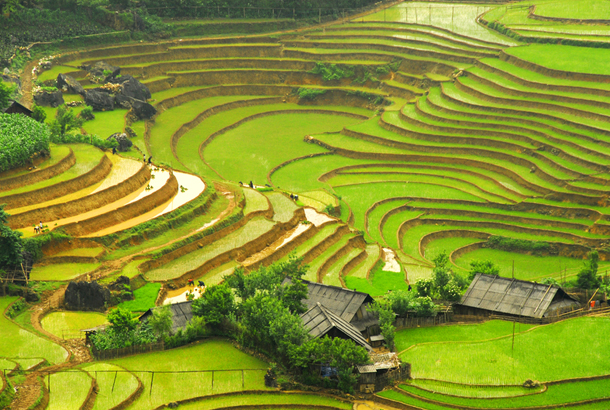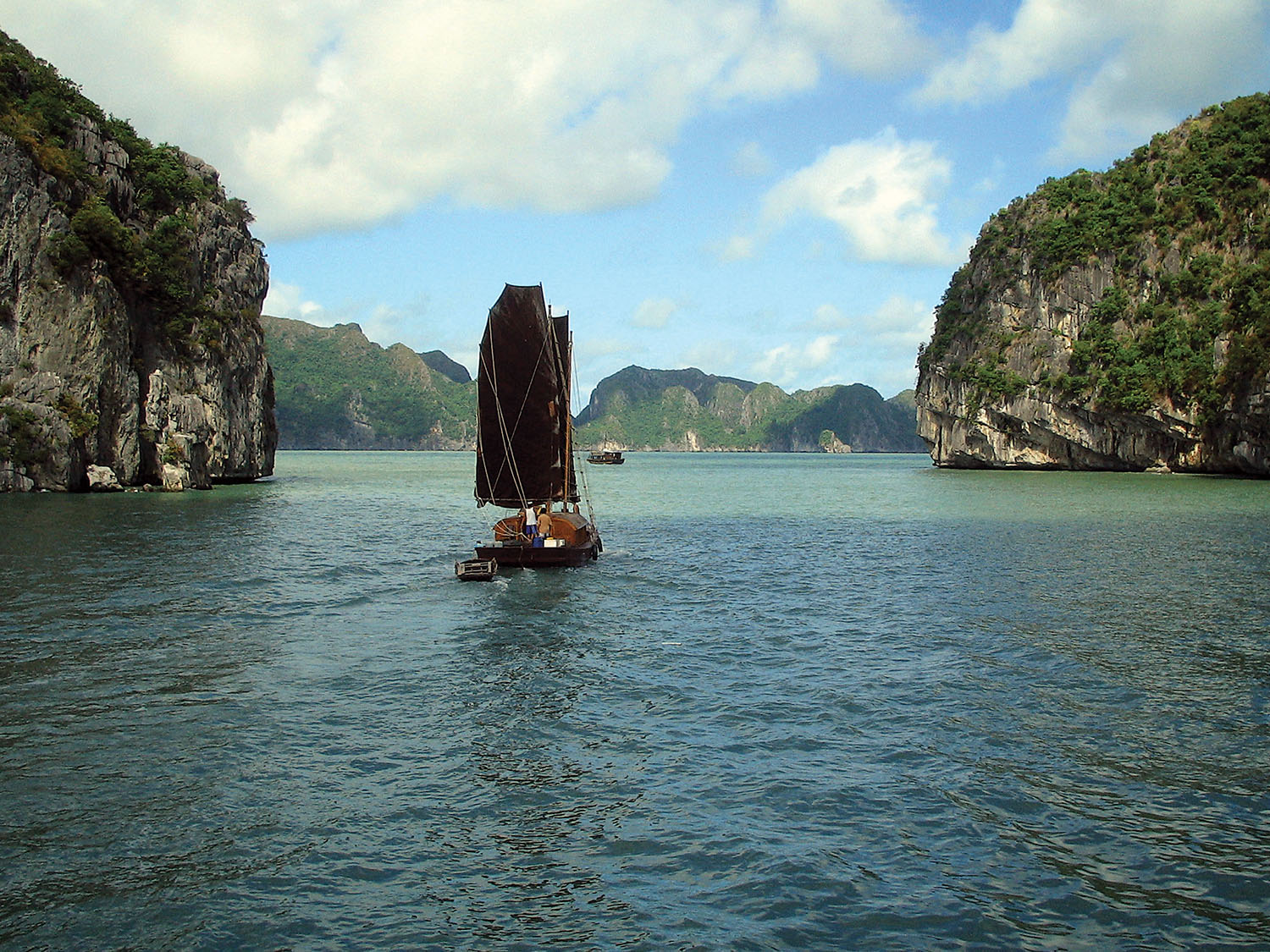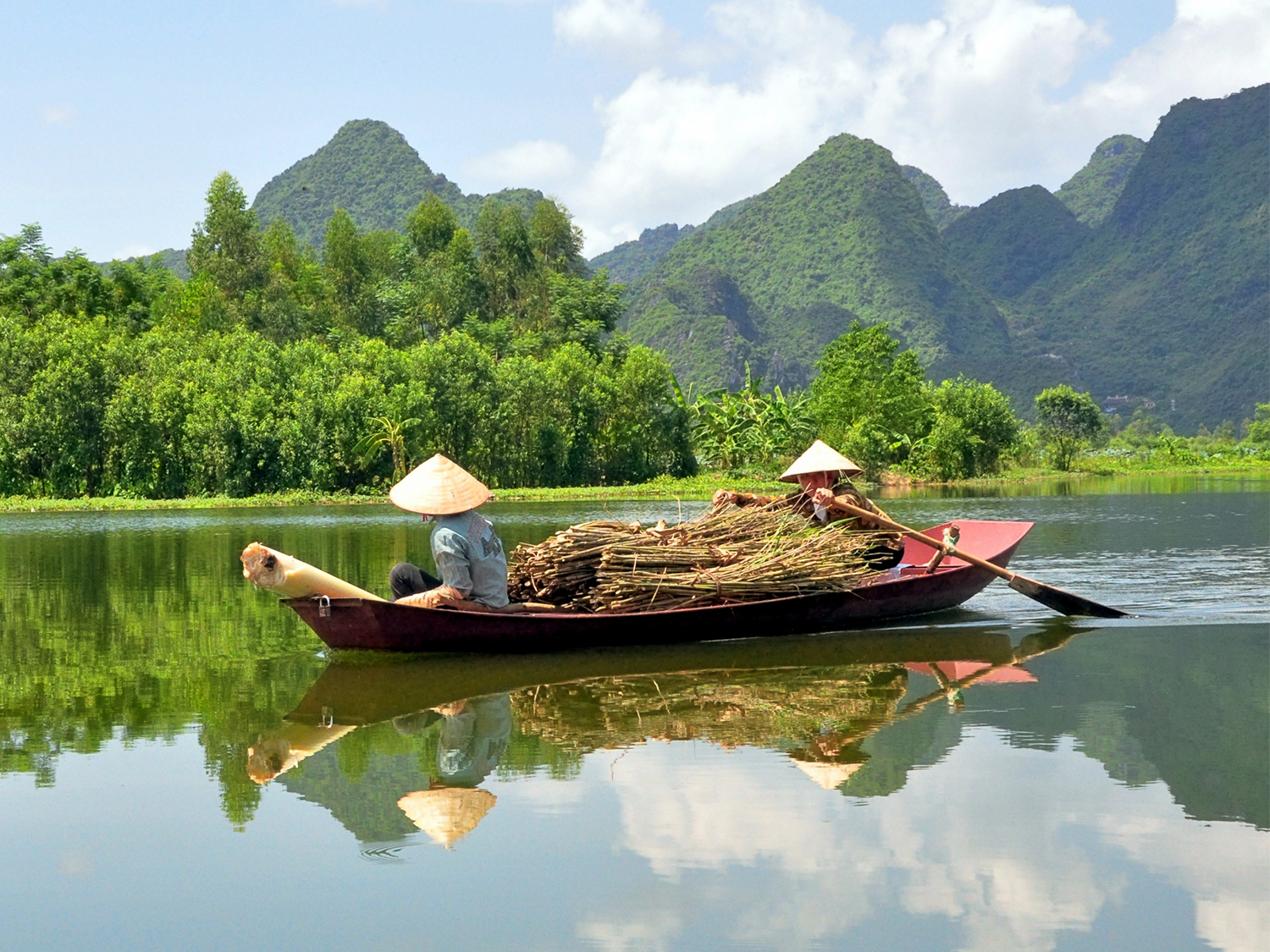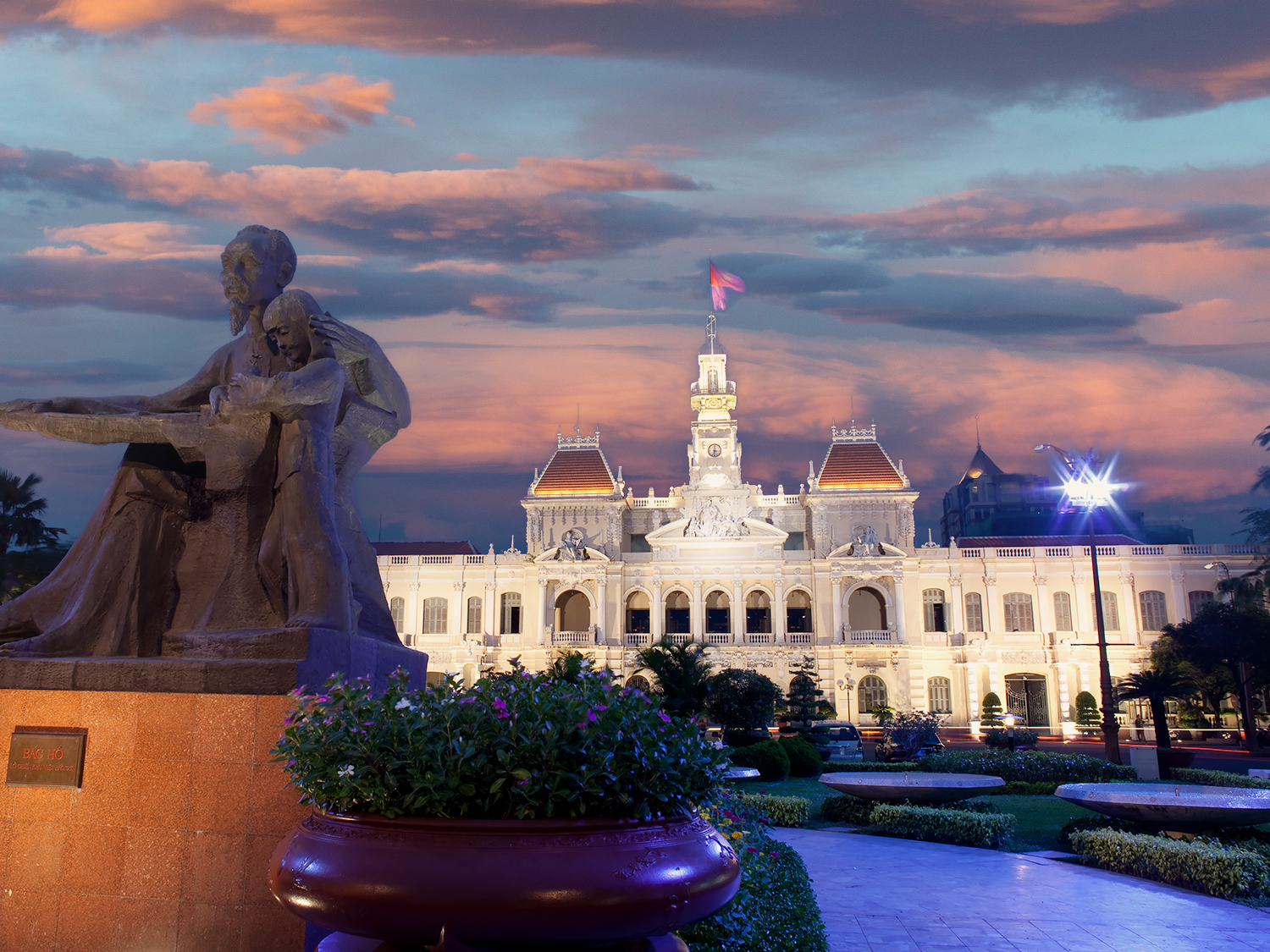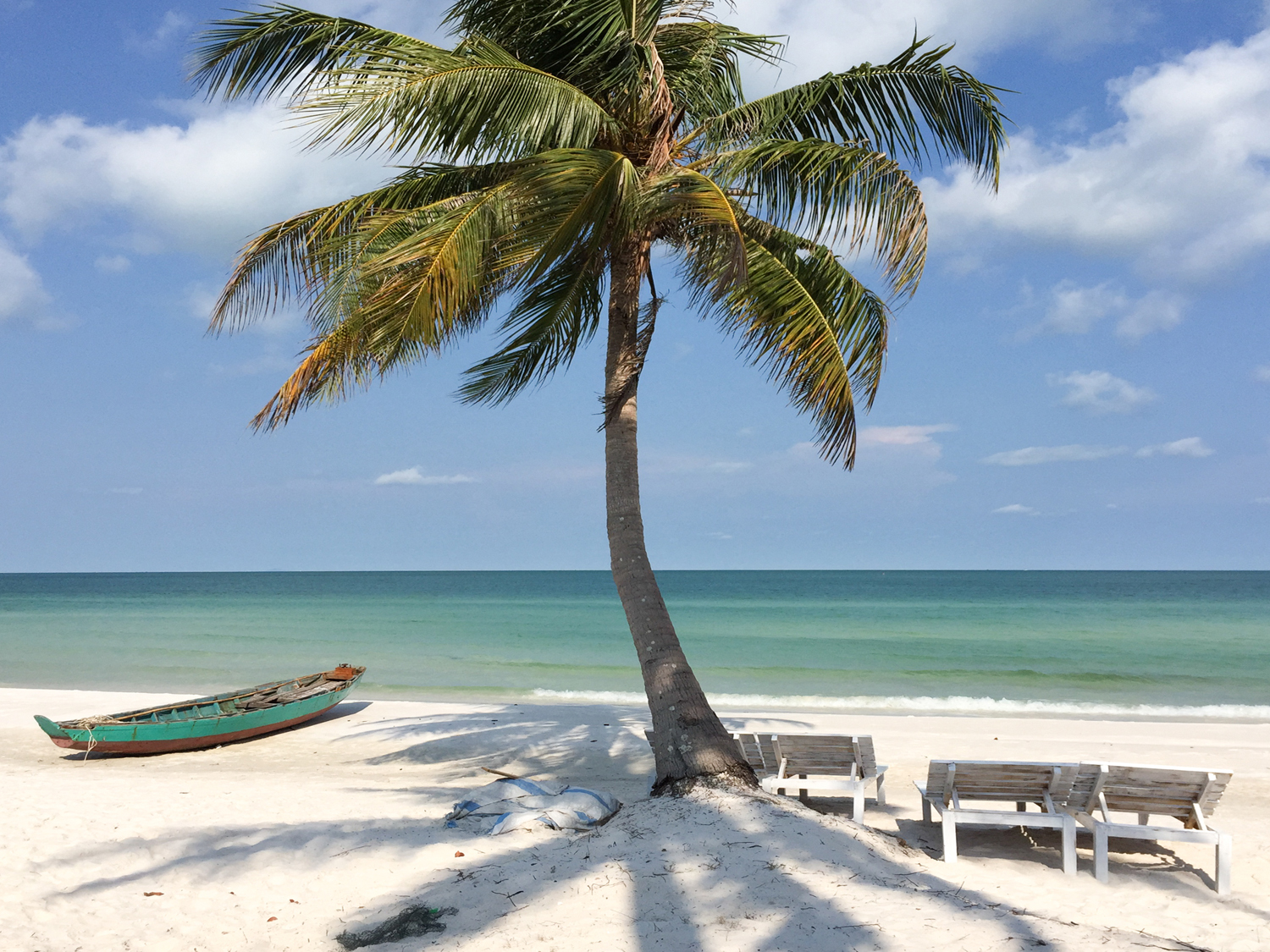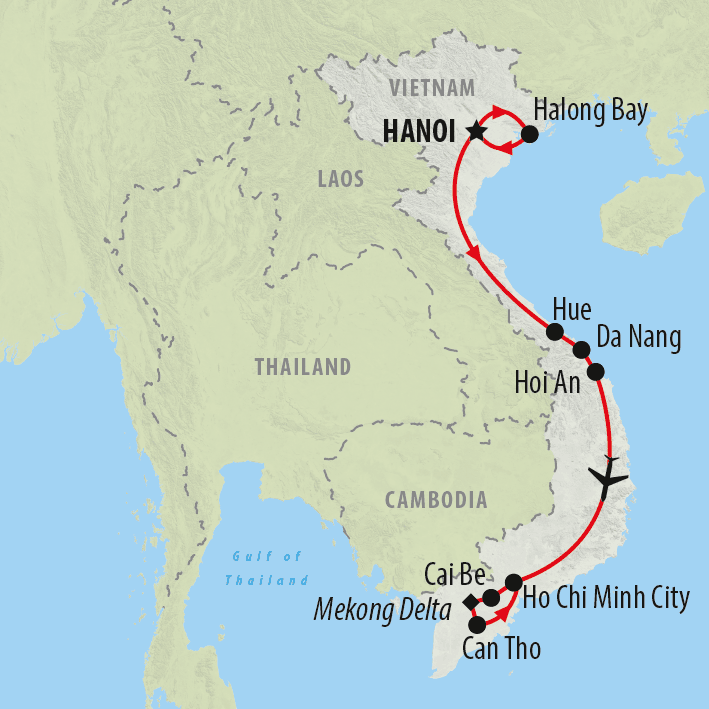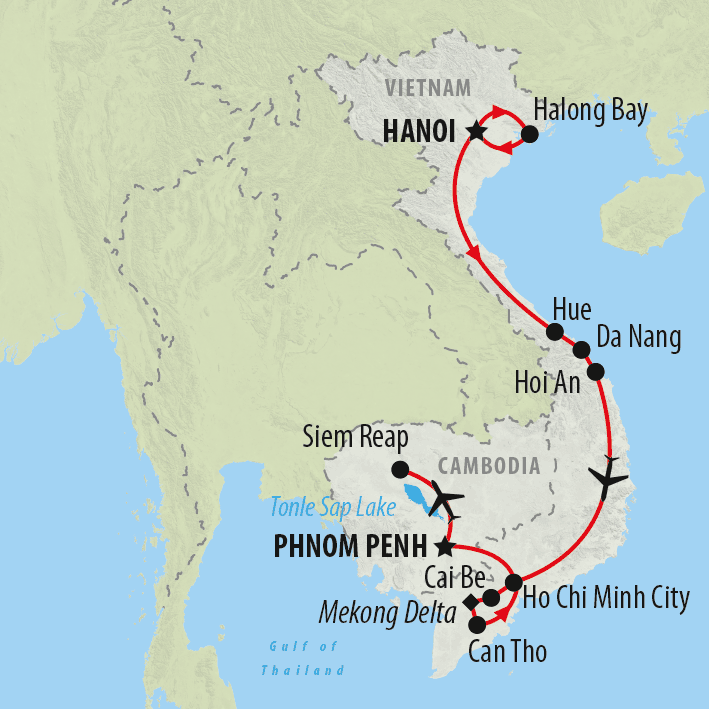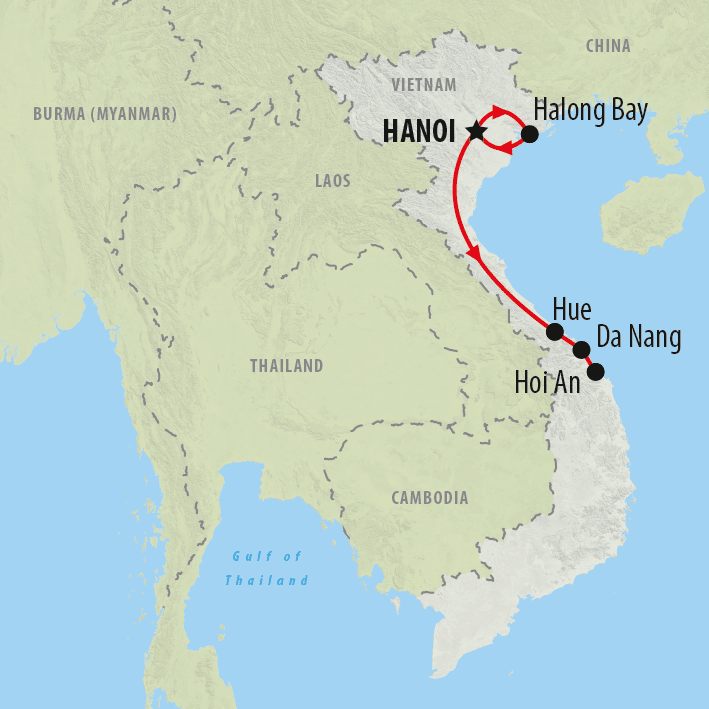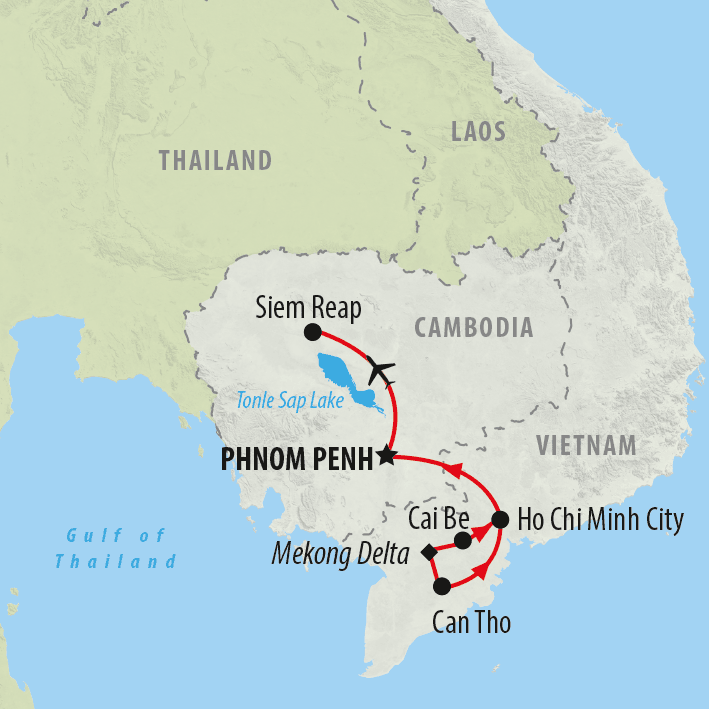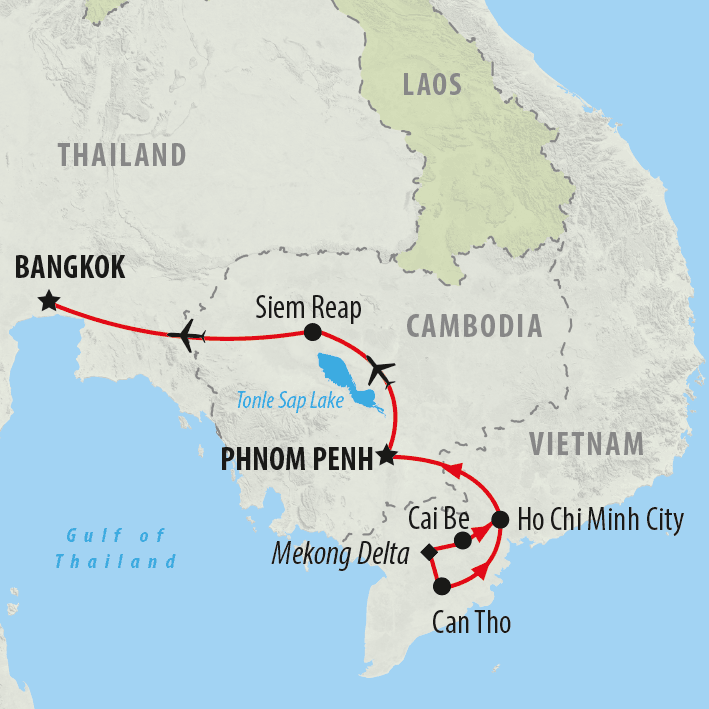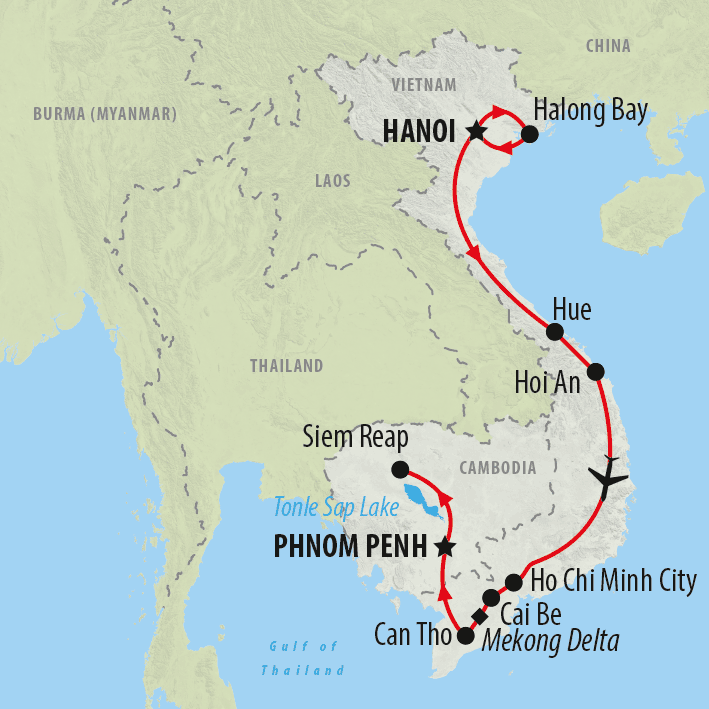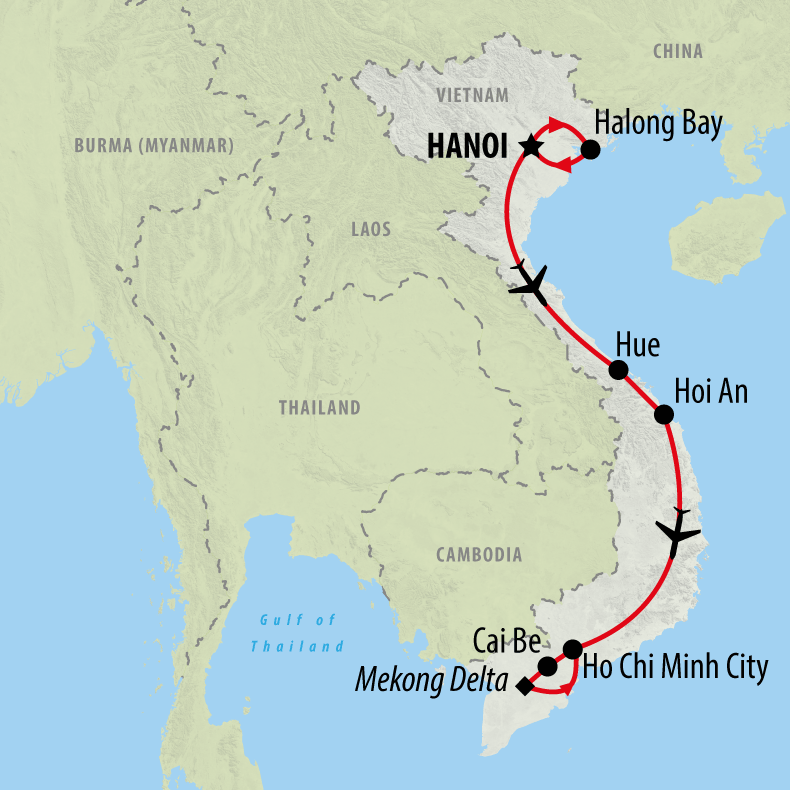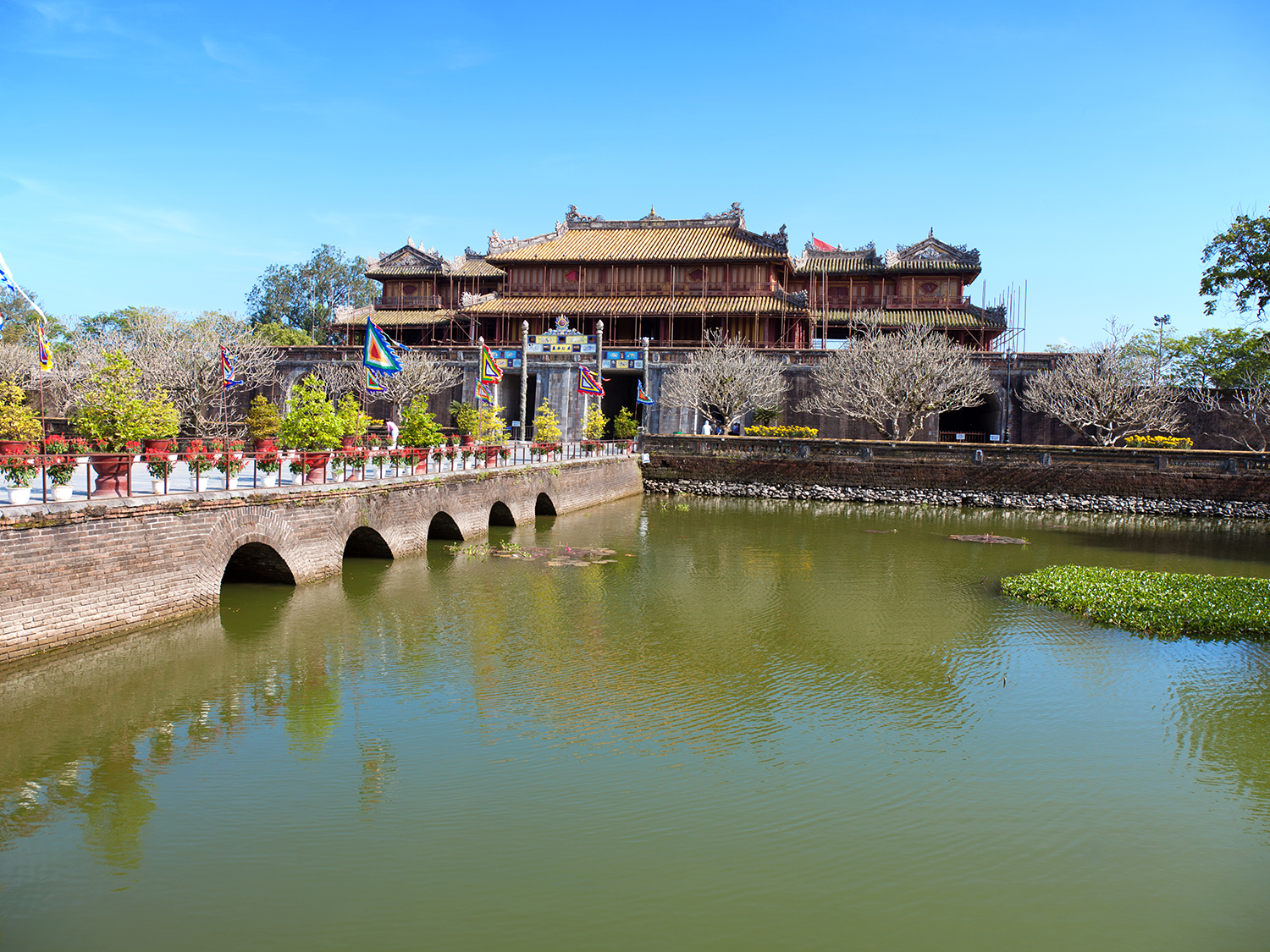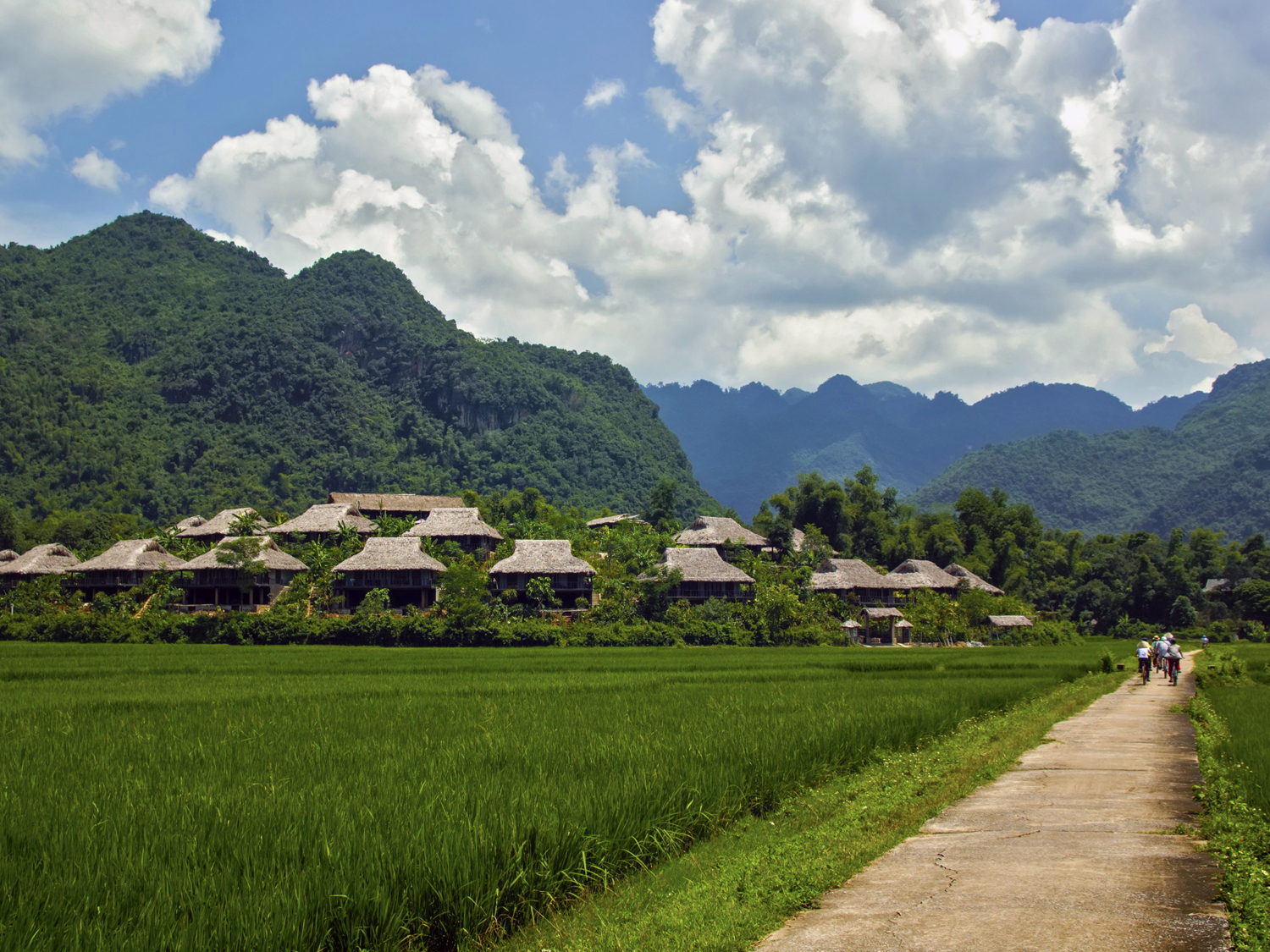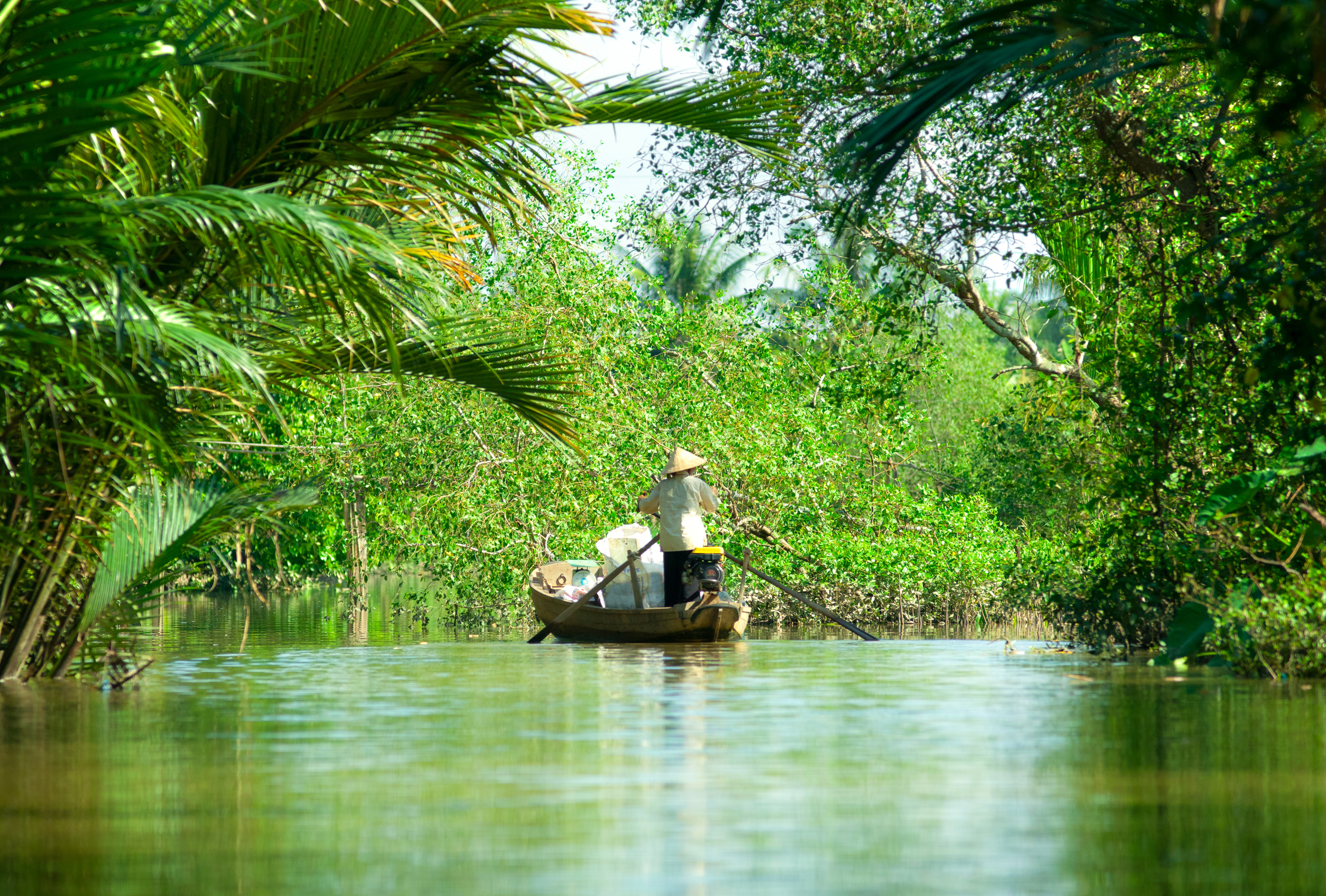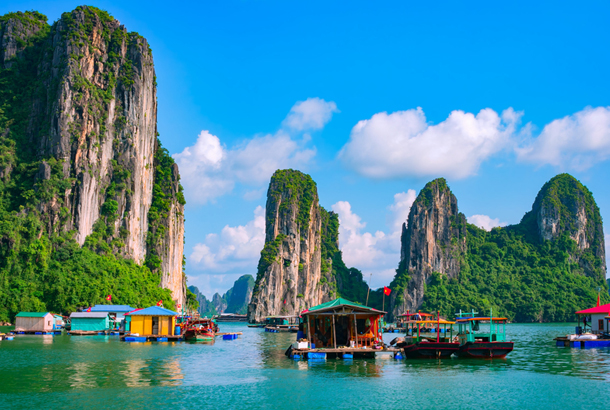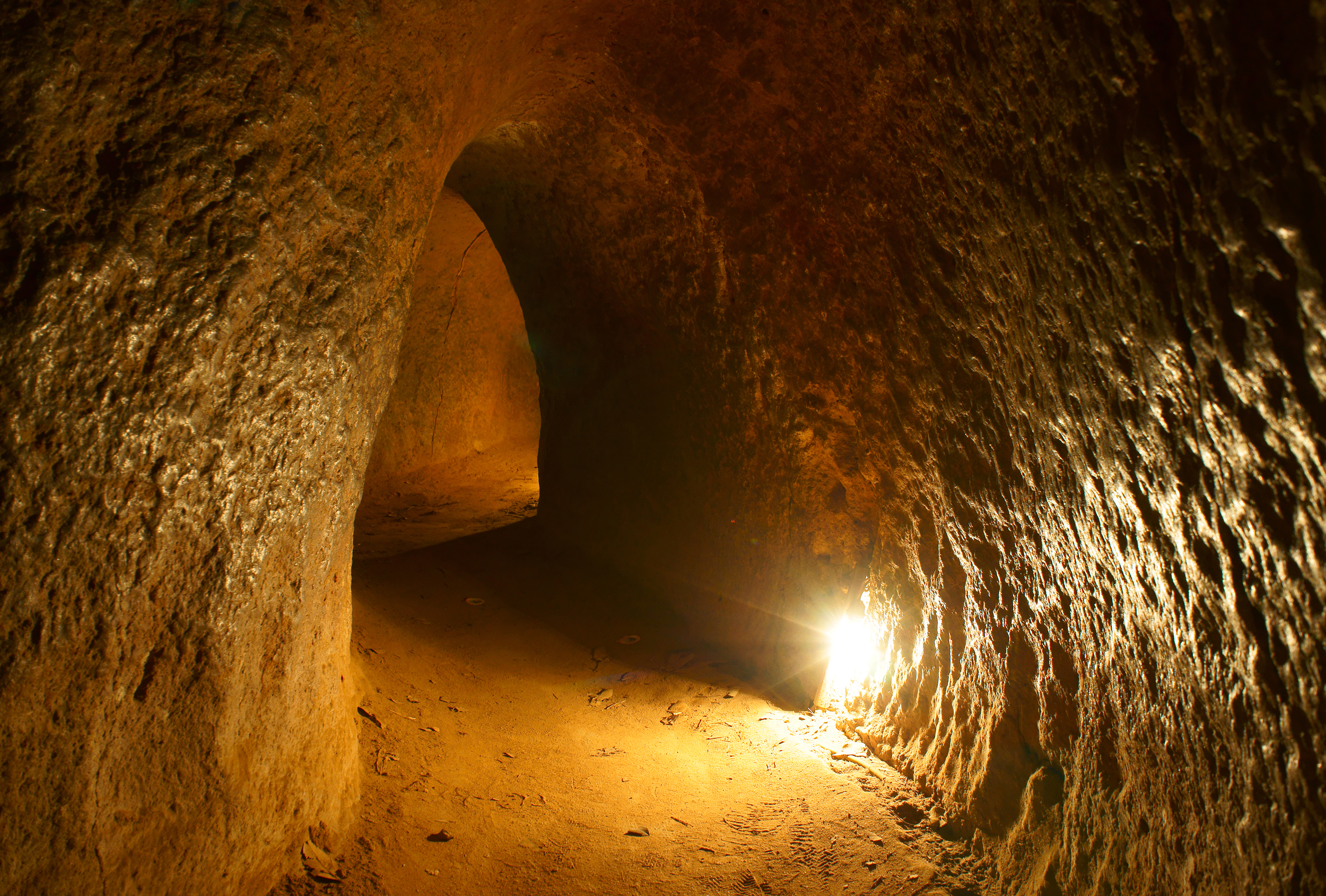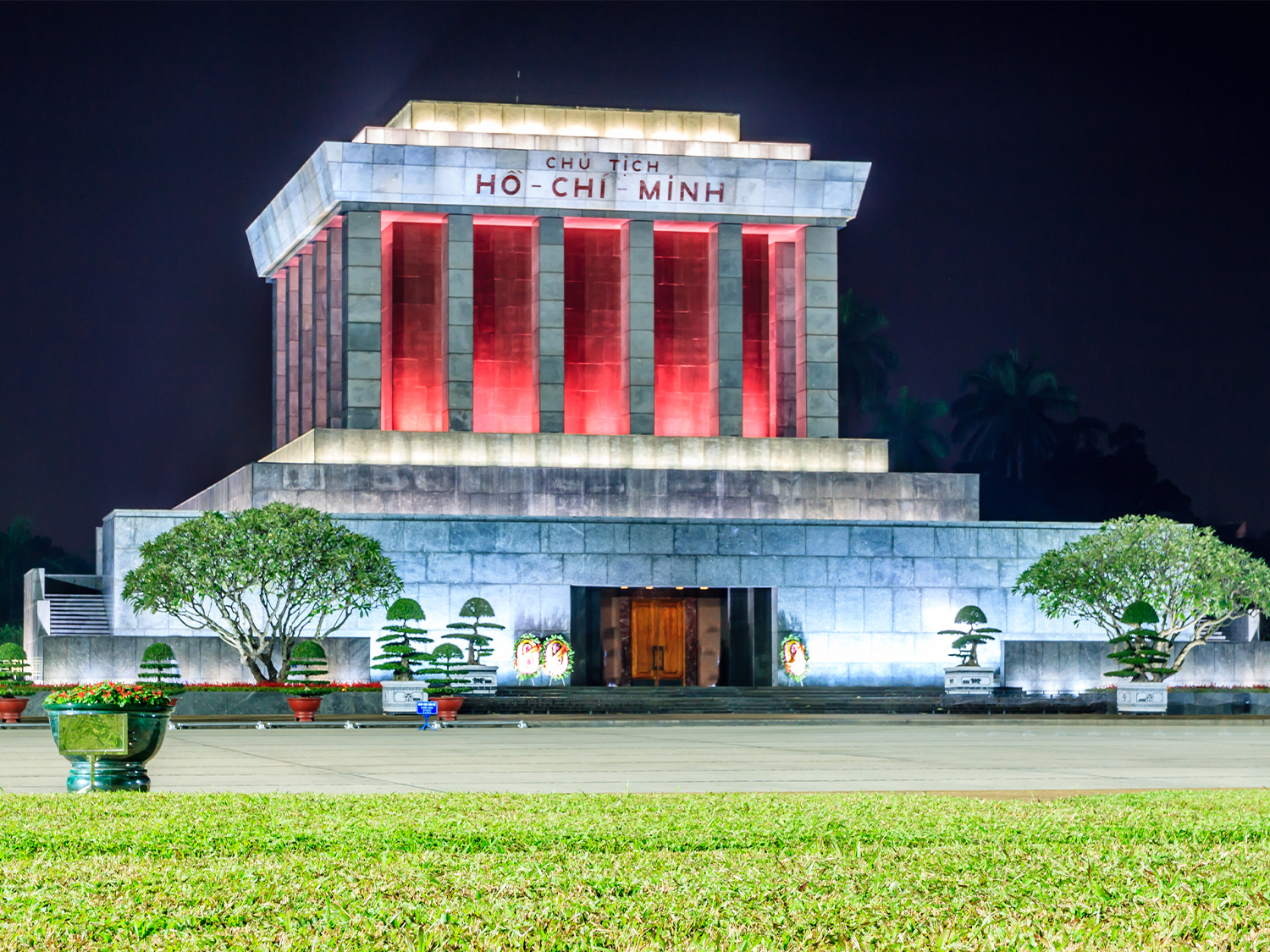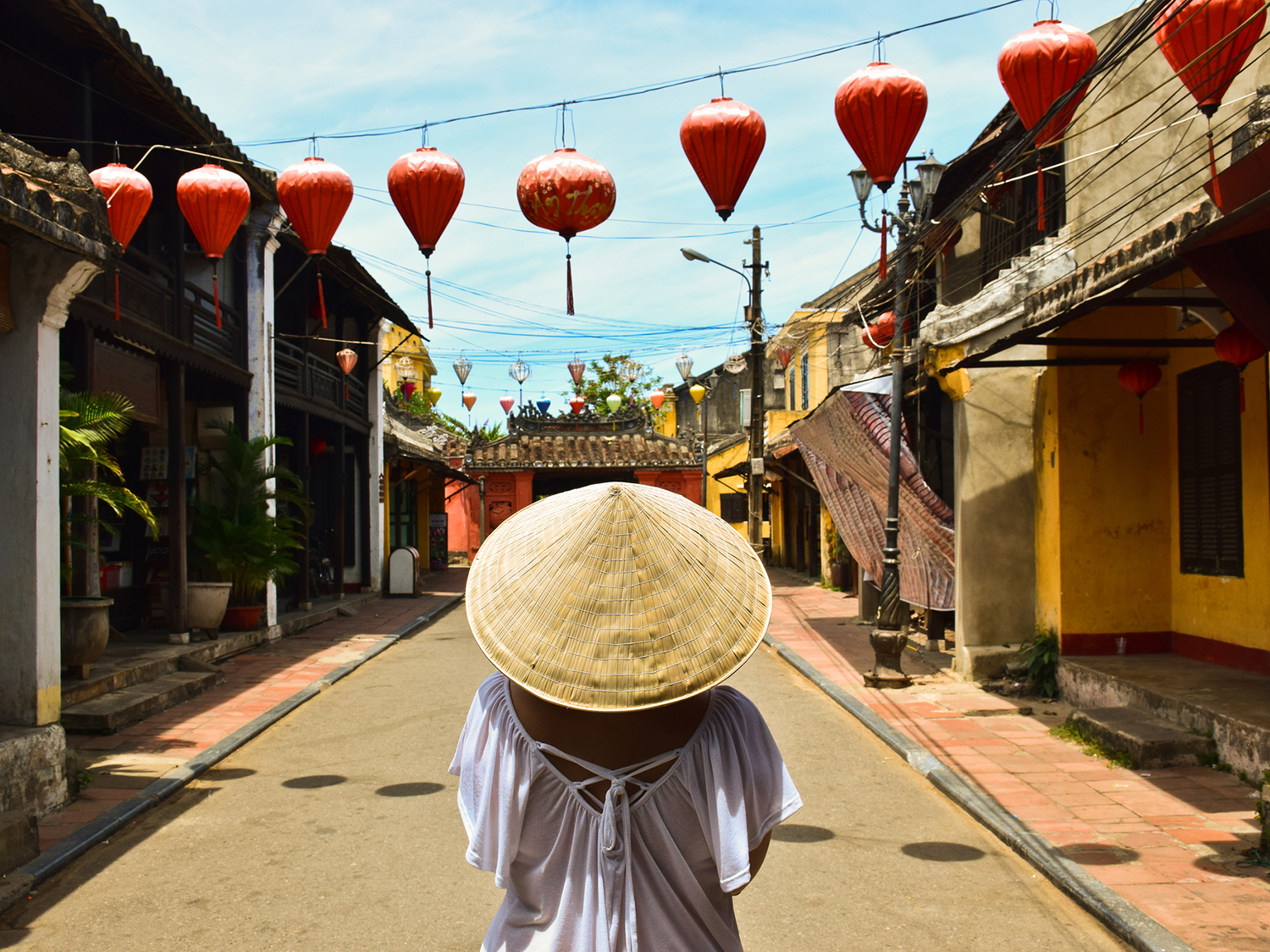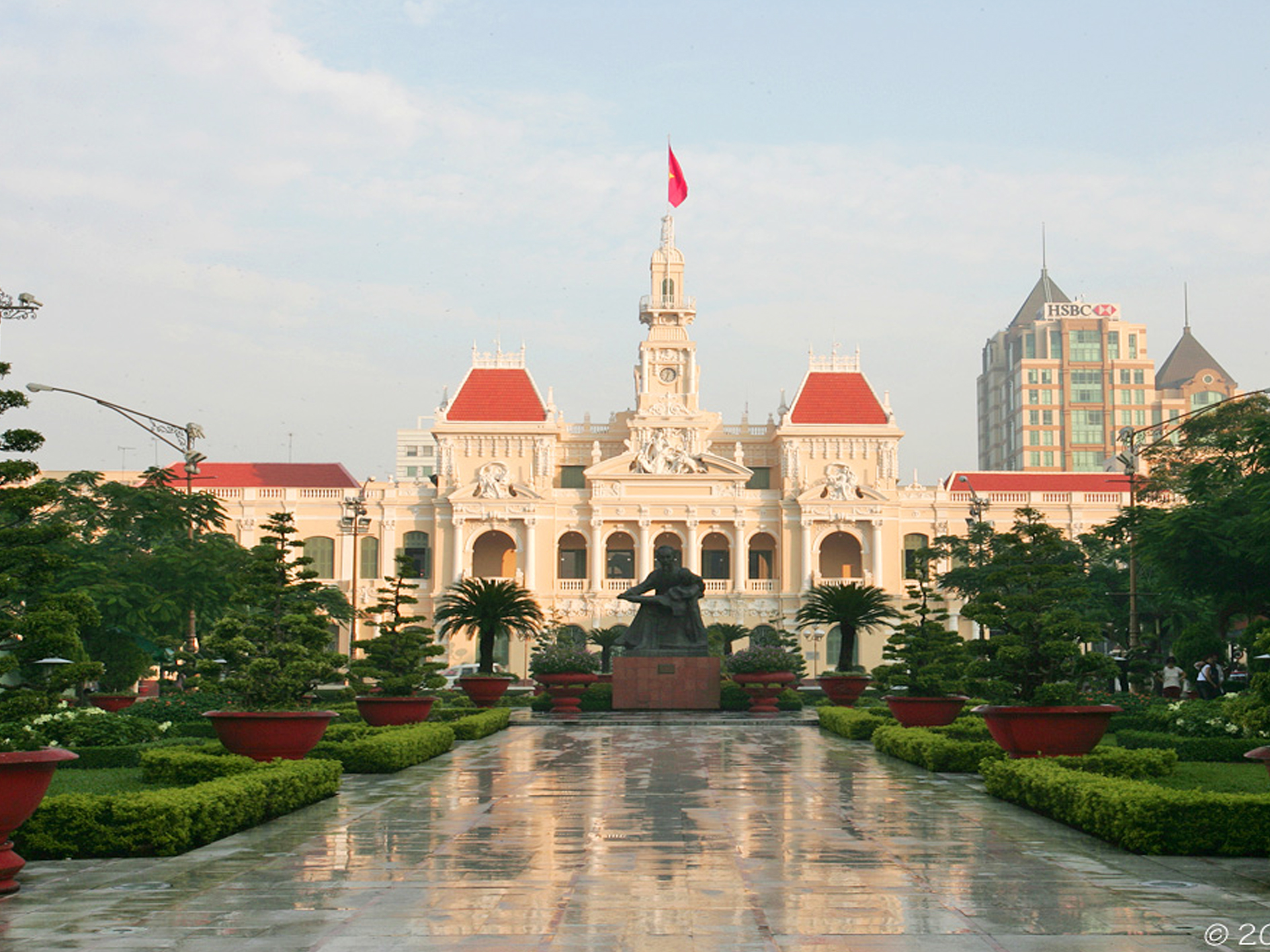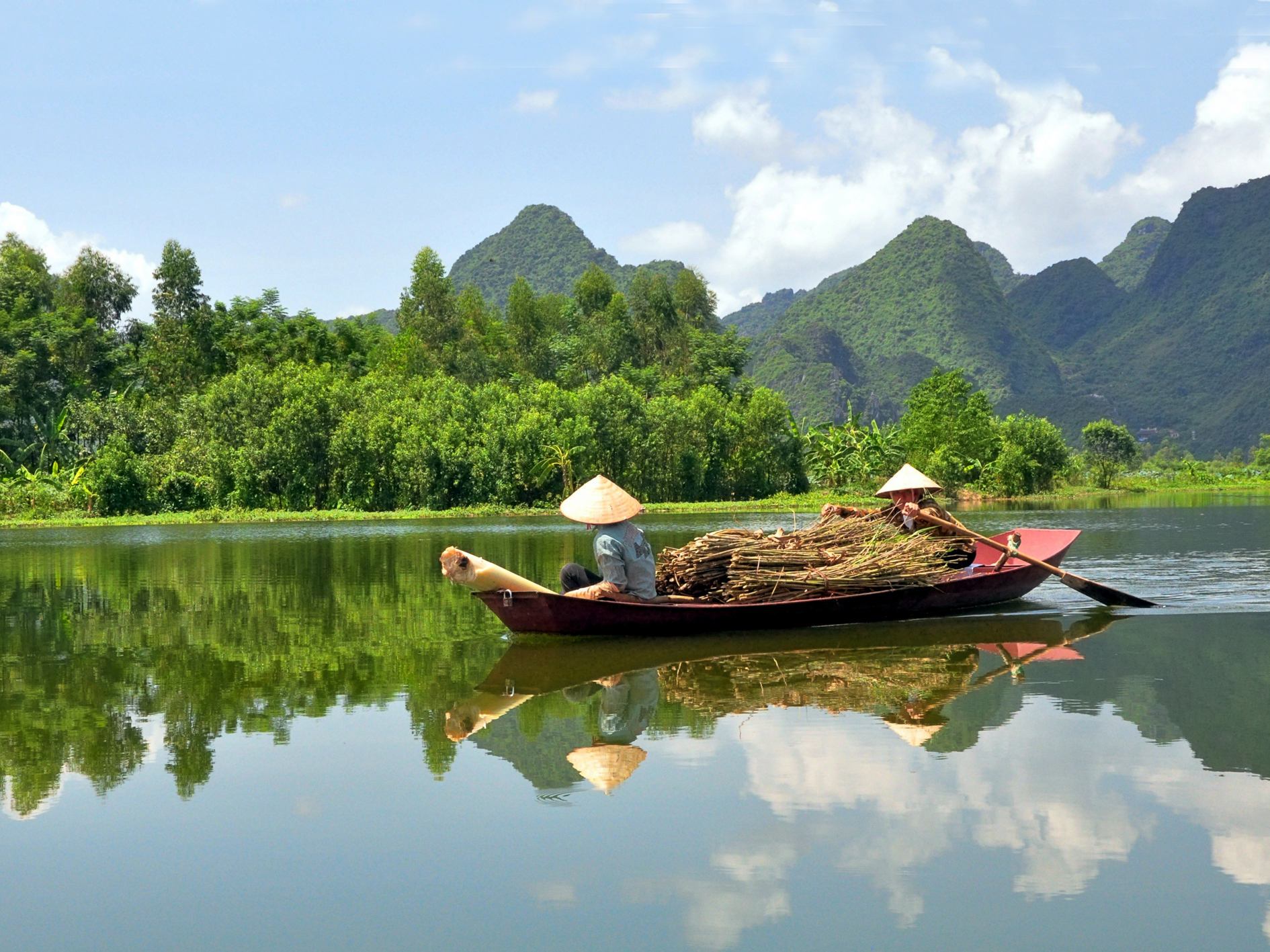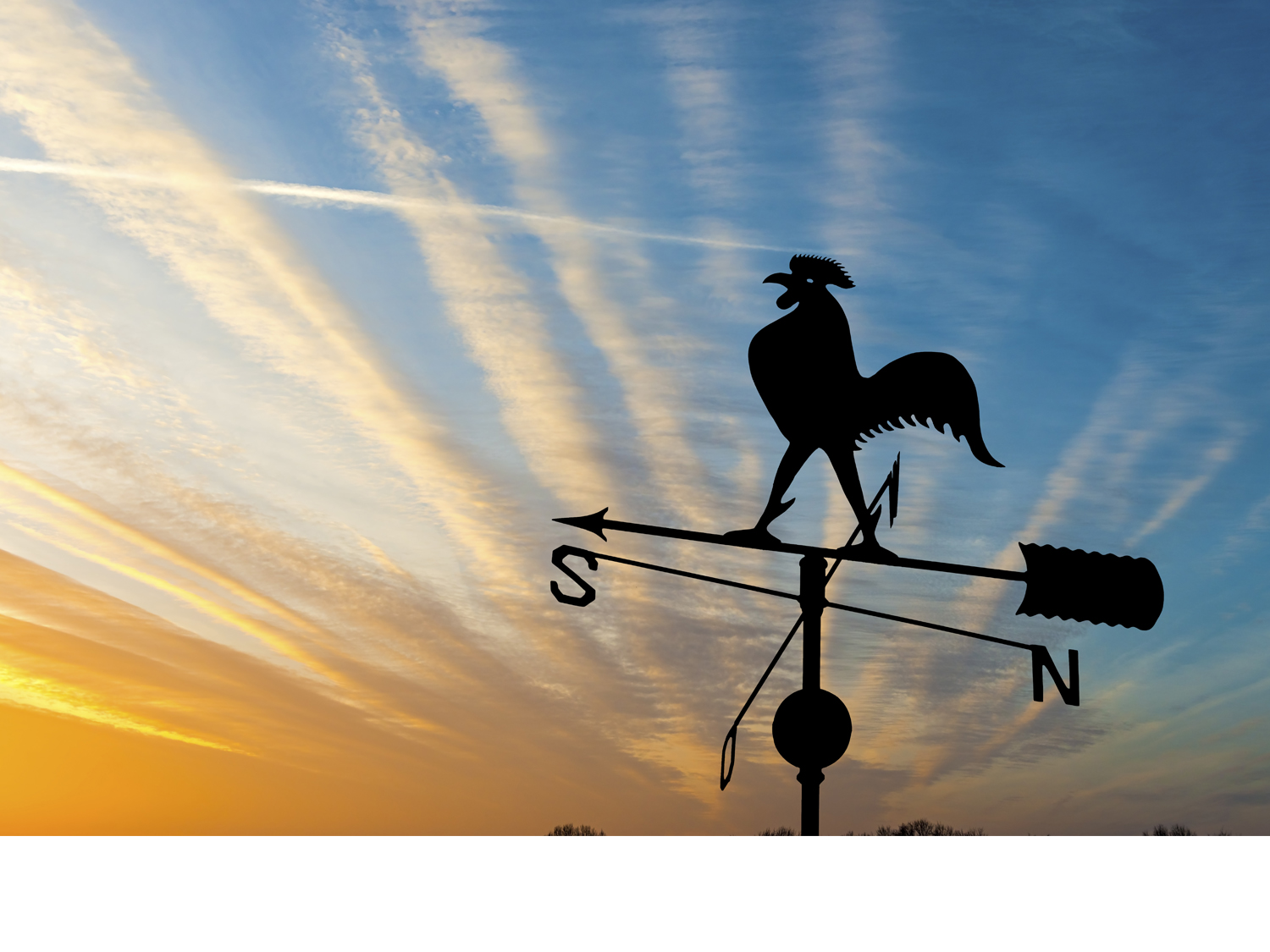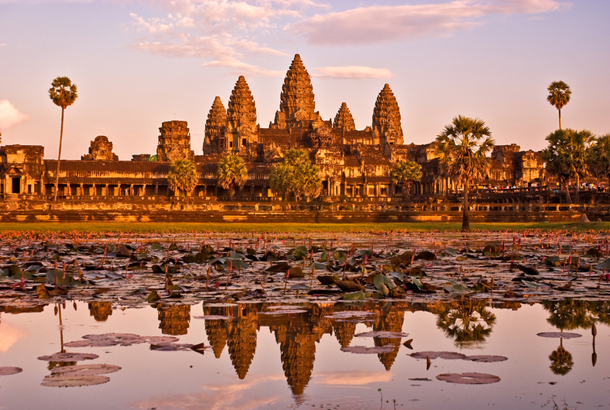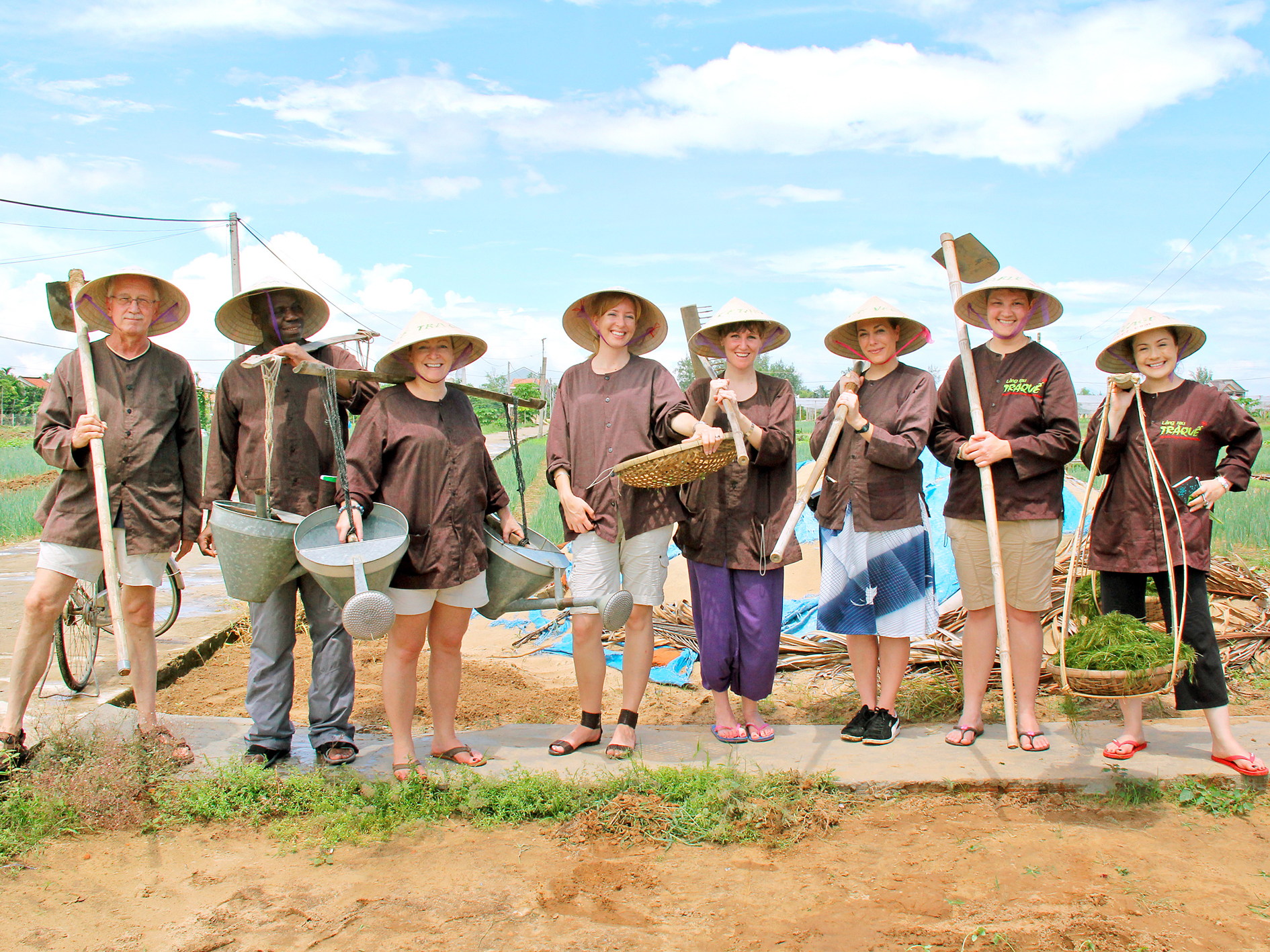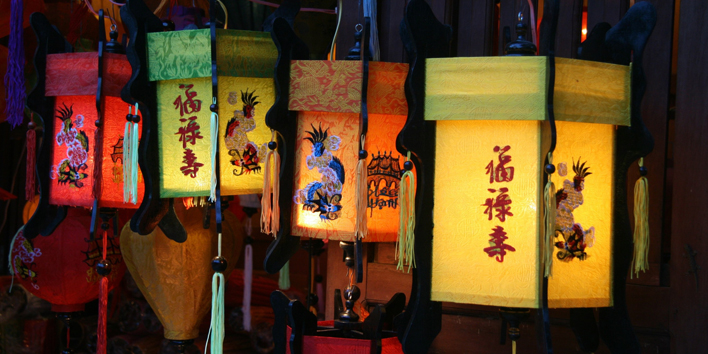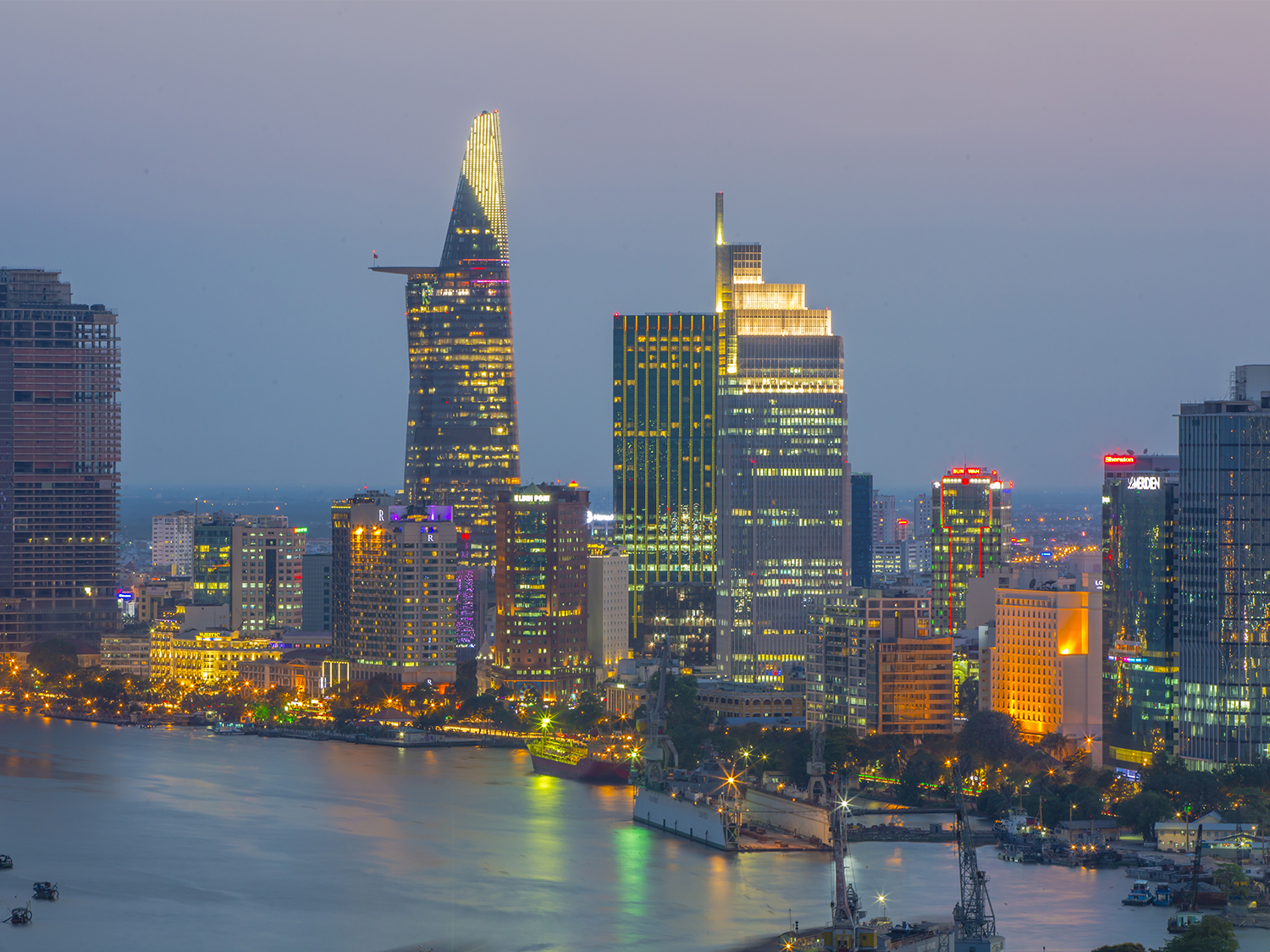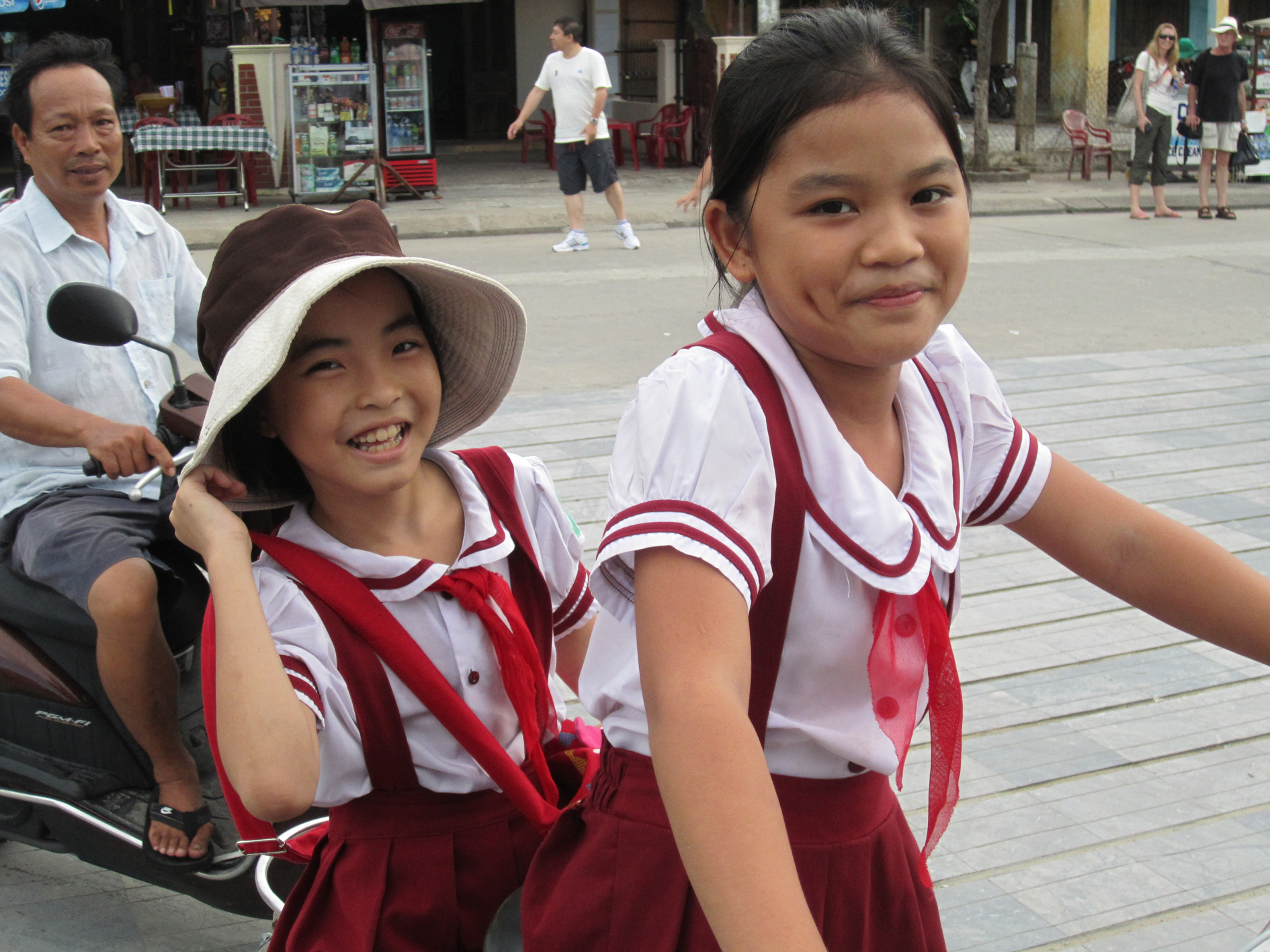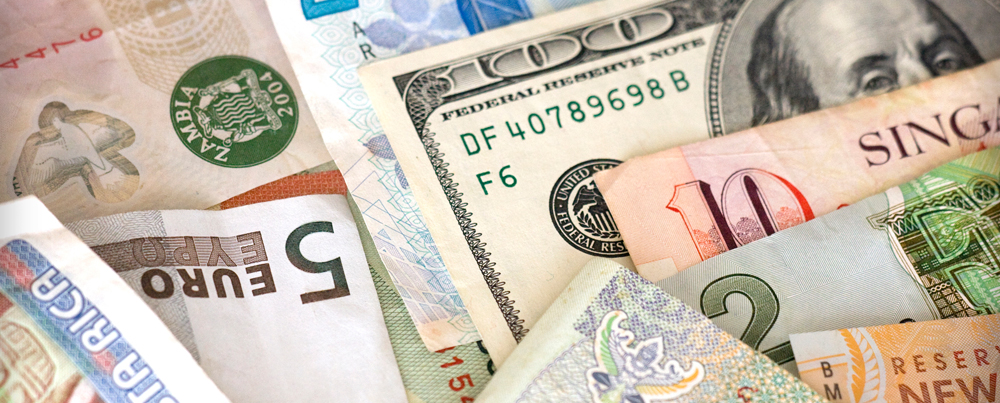Best Time to Visit VietnamOptimal Travel Seasons for Exploring Vietnam
When do you want to go?
2024
I'm flexible
Passengers
Adults (18+)
Children (0 - 17)
Vietnam at a Glance: Best Time to Visit
Recommended time to visit:
January - May. Vietnam is more than 1000km in length and has an extremely varied climate. These months are the best time to ensure warm, dry conditions. March - April in particular sees warm, dry weather throughout the country.
Less popular time to travel:
April - October is the generally accepted monsoon season, although again this can vary depending on where you travel (more detail below). Temperatures are high and monsoon rains are frequent. June - August are the wettest months.
Best time for beaches:
Temperatures are warm year round, but the best beach weather is during the dry season, from February - May.
Exciting time to visit:
The monthly Hoi An Full Moon Festival is a great time to visit the town - you can join us on our dedicated Full Moon Festival tour every September.
Seasons and Weather
Vietnam has a highly variable climate that's best explained by dividing the country into three distinct regions - the north, central and the south. These regions experience two distinct weather patterns - the northern part of the country has four seasons (spring, summer, autumn and winter) while the southern half has just two with the wet and dry seasons. The dry season is generally a much more popular time of the year to visit, with less rainfall and humidity.
What are the weather patterns like in north Vietnam?
The north experiences the northeast monsoon between the months of November and March, which brings great swathes of mist to popular areas like the rice terraces in Sapa and the karst limestone outcrops of Halong Bay. Despite this being labelled the monsoon season, ironically, Hanoi is at its driest in December and January. Though temperatures do drop so be prepared for chilly nights. Hanoi also experiences the majority of its rainfall in July and August and these are not great months for hill tribe trekking around Sapa. The best time to visit the northern regions of Vietnam is between October and December when the skies are clearer and there's less rainfall. During these months there's also a break to the high humidity of recent months. March is another great month to travel around northern Vietnam.
What are the weather patterns like in central Vietnam?
Central Vietnam’s coastal areas, which includes Hoi An, Da Nang and Hue, benefit from the protection of the Truong Son mountain range. This region escapes a lot of the rains from the southwest monsoon between April and September thanks to these mountains, which means you can expect sunny days during these months. Unfortunately, the mountains don't protect these destinations from the northeast monsoon, which falls between September and December, coupled with typhoons from the Western Pacific. Flooding has been known in certain areas such as Hoi An during these months. The best time to visit central Vietnam and its lovely beaches is between April and August when you can expect sunshine and blue skies with pleasantly hot temperatures. Around Dalat and the highlands rainfall starts to increase around June, so April and March are the ideal months for trekking in this particular area.
What are the weather patterns like in south Vietnam?
Southern Vietnam (Ho Chi Minh City and the Mekong Delta) benefits from a long dry season between December and May when the skies are clear, the landscape is lush and the Mekong Delta is calm. The monsoons arrive towards the end of May and stay until about November. Monsoon showers are generally short and sweet and shouldn’t deter you from travelling. If you’re in Ho Chi Minh City during these quite spectacular showers, you’ll be wowed by how quickly the water dissipates due to very impressive drainage and then it’s blue skies again.
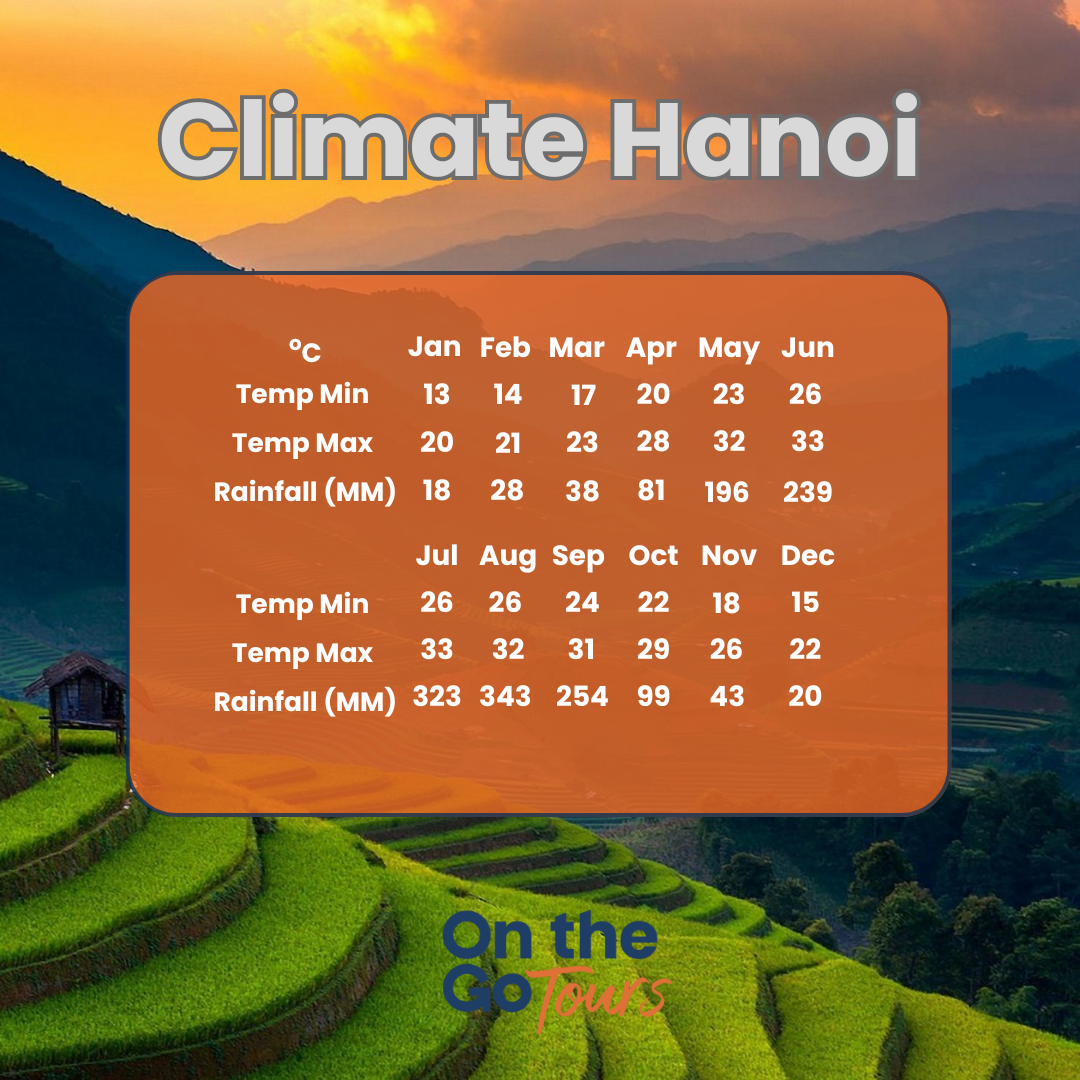
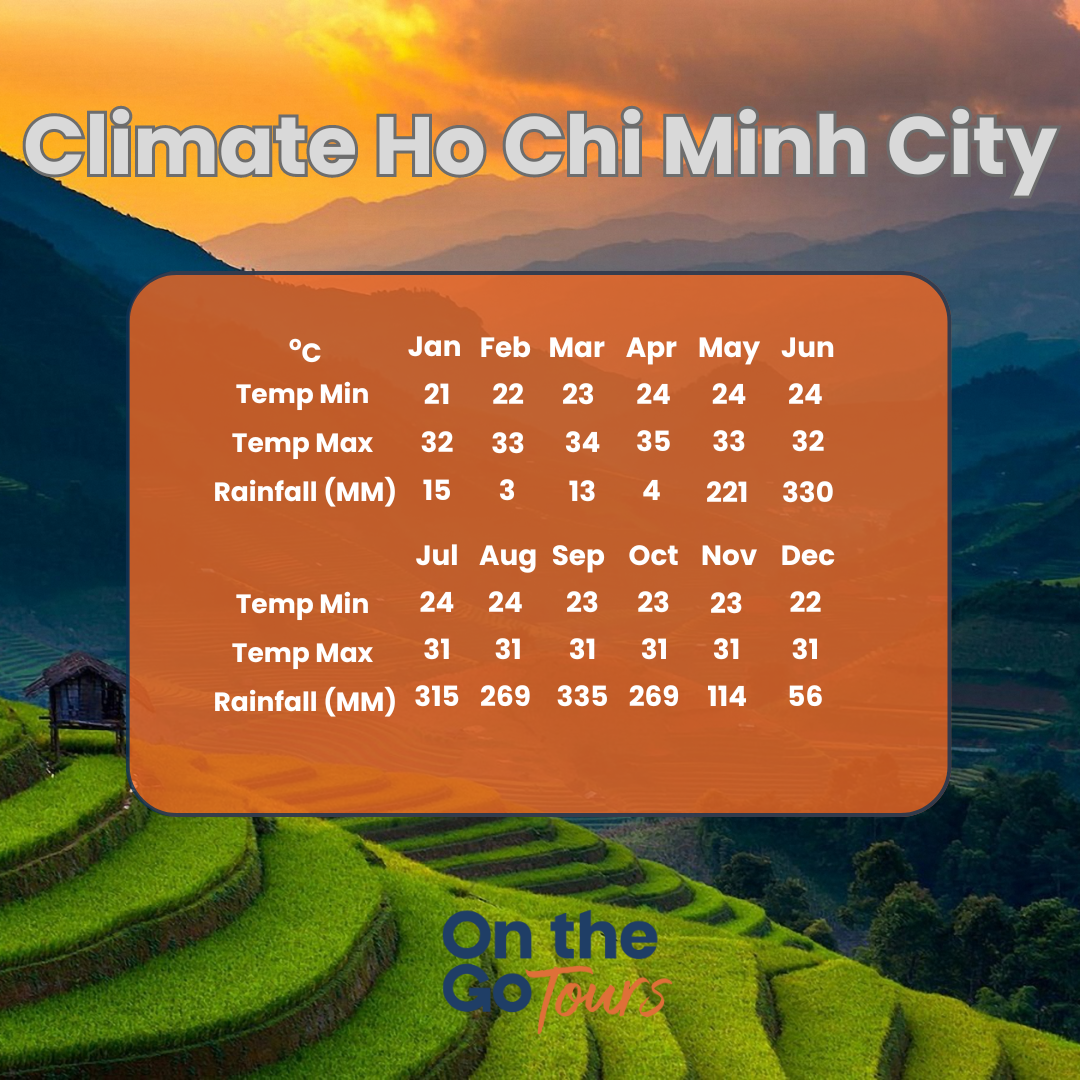
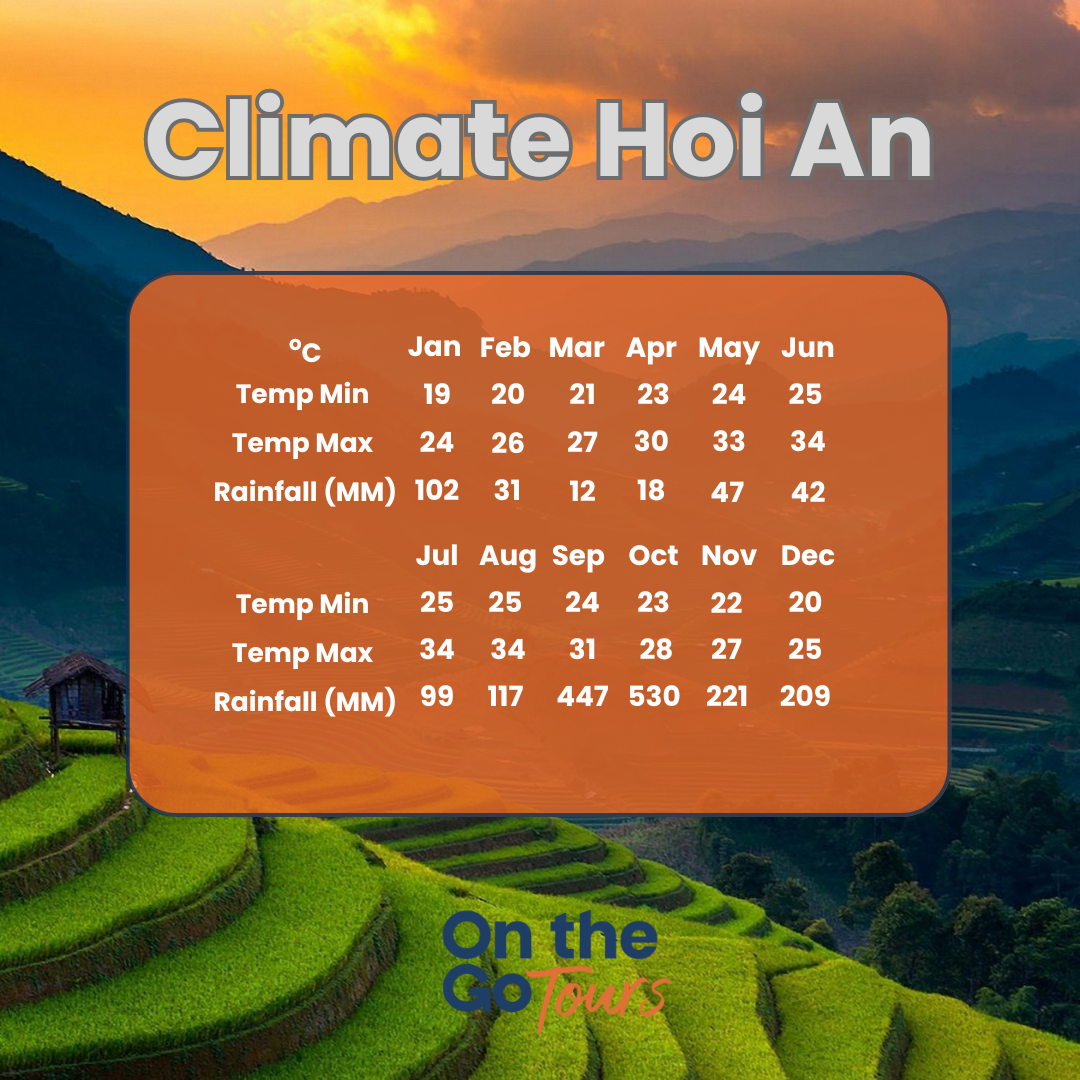
Best Time to Visit by Region
Stretching over 1,000 kilometres in length, Vietnam is a vast country that sees huge regional diversity in its climate. Here we take a closer look at the weather patterns in some of the country’s most popular destinations.
When is the best time to visit Hanoi?
Hanoi is relatively humid year-round and receives a large amount of sunlight. It also experiences four seasons, with hot summers and high rainfall during July and August and dry cold winters from December to February.
The best time to visit is during spring, from March to April, and autumn, from September to November. These months are relatively dry with balmy temperatures.
When is the best time to visit Halong Bay?
Those wanting to visit Halong Bay should time their trip during spring, from March to May, or autumn, from September to November. The pleasant temperatures and dry climate make this an excellent time to explore aboard a traditional junk boat cruise.
However, if you are a more budget-conscious traveller, you may wish to time your trip between May to September. Although this summer season can see sporadic storms, this is considered the low season and you could save a great deal on cruises.
When is the best time to visit Ho Chi Minh City?
Although Ho Chi Minh City is blessed with a pleasant climate year-round, it still experiences two distinct seasons that travelers should be aware of. December to April sees the dry season, with hot temperatures and low humidity.
The rainy season then runs from May to November. Whilst these months see higher humidity and more frequent showers, they are interspersed with sunny spells.
When is the best time to visit Hue?
Hue has a tropical climate that can be divided into two distinct seasons. August to January sees the colder wet season and rainfall can frequent and heavy. March to August is then considered the dry season, with pleasant temperatures and less rainfall.
Tourist numbers are at their highest from New Year until the end of March, so it is recommended to visit during the rest of the year for fewer crowds.
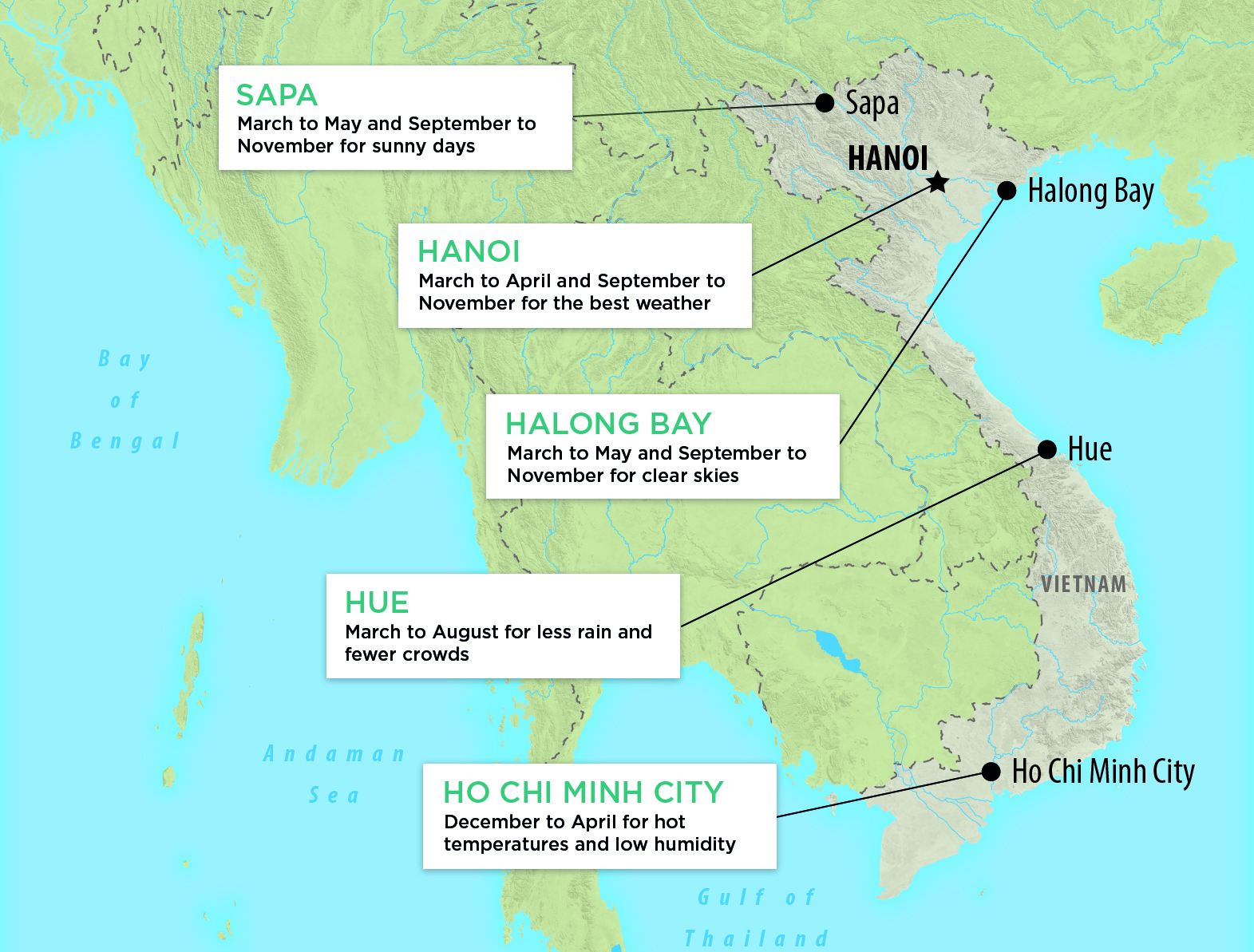
Best Time to Visit Vietnam's Beaches
The best time to visit Vietnam’s beaches depends on which area you want to go to. Though as the best beaches stretch from central to southern Vietnam, there's always a good beach break to be had no matter what season you are travelling in.
When's the best time to visit Vietnam's central beaches?
The beaches around Danang and Hoi An on the central coast are warm year-round, with temperatures peaking during the summer months of July and August. The dry season runs from February to July, with August to November seeing rainfall increase and the potential for a typhoon to hit.
When's the best time to visit Vietnam's southern beaches?
Vietnam’s southern beaches likewise experience warm temperatures year-round, but different destinations experience rainfall at different times. The beaches at Nha Trang are affected by the monsoon season from September to January and occasionally see typhoons hit with torrential rain.
Phu Quoc, on the other hand, is best avoided from July to October due to rainy and wet weather. Whilst Mui Ne generally experiences less rain, its rainy season lasts from June to September and brings light afternoon showers. Con Dao is hot and humid throughout the year, with heavy rains from July to September.
Recommended tours
Site Closure Dates
Museums in Vietnam are closed on a Monday.
In Hanoi the Ho Chin Minh Museum is only open in the morning from 8am to 11.30am and closed on Monday and Friday.
Vietnam Hotspots
Vietnam Guides
Our customers say
Excellent
4.4 out of 5 based on 275 reviews
